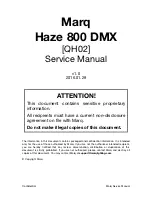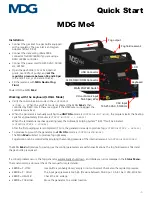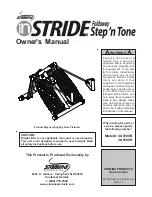
Valve Adjustment
Satisfactory performance of the metering valve depends upon the proper tightness of the nut which
retains the sealing gland. If the nut is too tight, the valve will be difficult to turn. If the nut is too loose,
the valve may leak air causing loss of calibration. When necessary to adjust the tightness, the
following procedure should be used.
1. Loosen the set screw, located in the groove on the backside
of the hand knob, using a 3/32 hex allen key. Rotate counter-
clockwise 1 full turn.
2. Lift off hand knob.
3. Using a 9/16 open end wrench, loosen the gland nut 1/2 to 1
turn counterclockwise.
4. Turn the brass stem clockwise by hand until it seals, and
then loosen the stem 2 full turns counterclockwise.
5. Tighten the gland nut clockwise by hand.
6. Tighten the gland nut an additional 1/8 turn clockwise using the 9/16 open end wrench.
7. The brass stem should now turn by hand with moderate resistance. (NOTE: If difficulty arises in
turning the brass stem by hand, the gland nut is too tight. Repeat steps
4, 5, and 6 slightly decreasing the amount tightened.)
8. After the correct adjustment of the gland nut has been made, turn the brass stem clockwise to the
closed position.
9. Install the hand knob over the brass stem, making
sure the bent tang (valve stop) is on the right side and
against the screw head.
10. Tighten the set screw, located in the groove on the
backside of the hand knob, clockwise to secure the
knob to the brass stem.
Curtis Dyna-Fog, Ltd. 2008
11


































